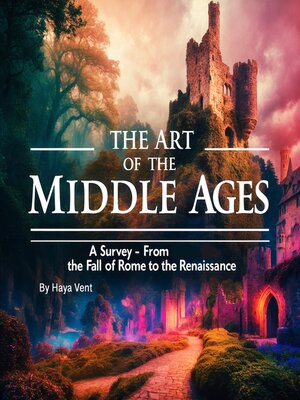The Art of the Middle Ages
audiobook (Unabridged) ∣ A Survey--From the Fall of Rome to the Renaissance
By Haya Vent

Sign up to save your library
With an OverDrive account, you can save your favorite libraries for at-a-glance information about availability. Find out more about OverDrive accounts.
Find this title in Libby, the library reading app by OverDrive.



Search for a digital library with this title
Title found at these libraries:
| Library Name | Distance |
|---|---|
| Loading... |
The Early Middle Ages, often referred to as the Dark Ages, marked a period of transition and transformation in European art following the fall of the Western Roman Empire in 476 CE. As centralized authority collapsed, artistic production became fragmented, with regional styles emerging across the continent. Despite political instability, the church played a crucial role in preserving and shaping artistic traditions, leading to a distinct fusion of Roman, Christian, and Germanic influences.
Monasteries became the primary centers of artistic production, as monks dedicated themselves to copying and illuminating manuscripts. These illuminated manuscripts, such as the Book of Kells and the Lindisfarne Gospels, featured intricate interlacing patterns, vivid colors, and detailed iconography. The emphasis on symbolism over naturalism reflected the spiritual concerns of the time, with biblical scenes and saintly figures depicted in stylized, otherworldly forms.
Byzantine art, with its roots in the Eastern Roman Empire, exerted a significant influence on early medieval artistic expression. The use of gold backgrounds, elongated figures, and solemn expressions in religious icons demonstrated the continuity of Roman traditions while adapting to Christian themes. Mosaics, particularly in churches such as Ravenna's San Vitale, showcased the grandeur of Byzantine influence in the West.







